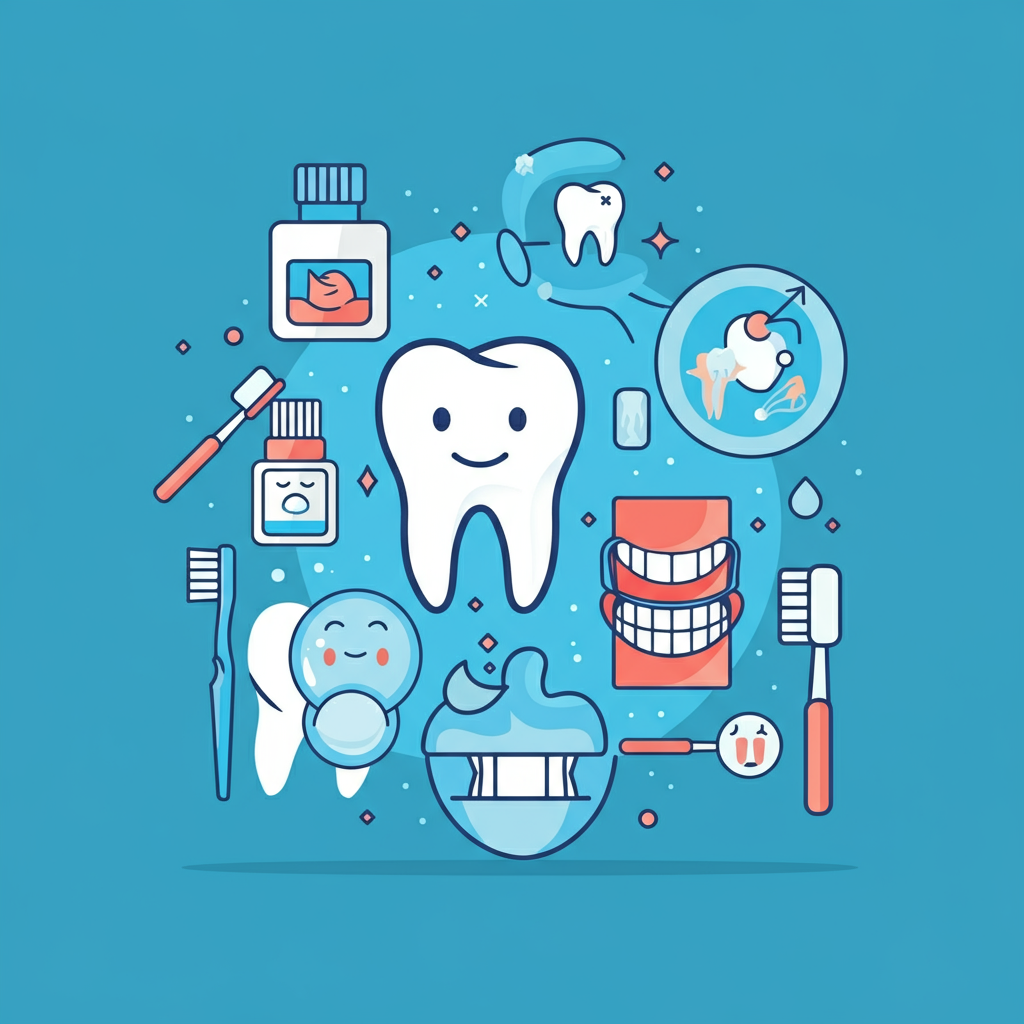We all love Grandma. She makes the best cookies, gives the best hugs, and has a lifetime of wisdom to share. But when it comes to your teeth, some of her well-meaning advice might be a little… outdated. Over the years, certain dental “facts” have been passed down that are more fiction than reality.
It’s time to set the record straight. We’re putting on our myth-busting hats to separate dental fact from fiction. Let’s explore some of the most common dental myths and uncover the real, science-backed truth to keep your smile bright and healthy.

Myth 1: Sugar is the Direct Cause of Cavities
This is probably the most famous dental myth of all time. We’ve all been warned that eating candy will rot our teeth. While there’s a grain of truth here, sugar isn’t the direct villain it’s made out to be. The real culprit is acid produced by bacteria.
Here’s how it works: Your mouth is home to millions of bacteria, both good and bad. The bad bacteria love to feast on the sugars and starches you eat. As they digest these sugary treats, they produce acid as a byproduct. This acid is what attacks your tooth enamel, the hard, protective outer layer of your teeth. Over time, this acid attack creates weak spots and, eventually, cavities.
So, it’s not the sugar itself that drills holes in your teeth, but the acid-producing bacteria that feed on it. This is why it’s important to brush after eating sugary or starchy foods—to wash away the food particles before the bacteria can have a party.
Myth 2: If Your Gums Bleed, You Should Stop Flossing
Seeing a little pink in the sink when you floss can be alarming. The natural reaction for many is to stop flossing, thinking they’re being too rough on their gums. However, this is the opposite of what you should do.
Bleeding gums are often the first sign of gingivitis, an early stage of gum disease. It’s caused by a buildup of plaque—a sticky film of bacteria—along your gumline. When you don’t floss, this plaque hardens into tartar, which irritates your gums, making them swollen, tender, and prone to bleeding.
Think of it like a splinter. If you leave it in, the area will stay inflamed and sore. But once you remove it, the healing can begin. Flossing removes the plaque that’s irritating your gums. While you might experience some bleeding at first, consistent, gentle flossing will help your gums heal, become stronger, and stop bleeding over time.
Myth 3: Brushing Harder Cleans Your Teeth Better
It seems logical: the more elbow grease you put into a task, the better the result. This might work for scrubbing floors, but it’s a terrible approach for brushing your teeth. Brushing too aggressively can do more harm than good.
Your teeth are strong, but your gums are delicate. Aggressive brushing can wear down your tooth enamel, making your teeth more sensitive and vulnerable to cavities. It can also damage your gum tissue, causing it to recede and expose the sensitive roots of your teeth.
The goal of brushing isn’t to scrub your teeth into submission; it’s to gently sweep away plaque and food debris. Use a soft-bristled toothbrush and hold it at a 45-degree angle to your gums. Use gentle, circular motions to clean every surface. Let the bristles do the work, not your bicep.
Myth 4: You Don’t Need to See a Dentist If Nothing Hurts
Many people operate on an “if it ain’t broke, don’t fix it” mentality when it comes to their teeth. If there’s no pain, everything must be fine, right? Unfortunately, this is a dangerous assumption.
Most major dental problems, like cavities, gum disease, and even oral cancer, develop silently without causing any pain in their early stages. By the time you feel discomfort, the problem is often more advanced, requiring more complex and expensive treatment.
Regular dental check-ups are your first line of defense. During these visits, we can spot potential issues long before they become painful problems. Professional cleanings remove the hardened tartar that your toothbrush can’t, keeping your gums healthy. Think of your dentist as a detective for your mouth, searching for clues to keep you healthy.
Myth 5: Baby Teeth Don’t Matter Since They Fall Out Anyway
It’s easy to dismiss the importance of baby teeth. After all, they’re just temporary. But primary teeth, as they’re officially known, play a huge role in your child’s long-term oral health.
Baby teeth act as placeholders for permanent teeth, guiding them into their correct positions. If a baby tooth is lost too early due to decay, the neighboring teeth can drift into the empty space. This can block the permanent tooth from erupting properly, leading to crooked teeth and the potential need for braces down the road.
Furthermore, untreated decay in baby teeth can lead to pain, infection, and problems with eating and speaking. Good oral hygiene habits start from the very first tooth.
Keeping Your Smile Healthy for a Lifetime
Grandma gave us plenty of great advice, but it’s time to retire these dental myths. By understanding the science behind a healthy smile, you can make informed choices for your oral care.
Remember to:
- Brush gently twice a day with a soft-bristled brush.
- Floss daily to clean between your teeth.
- Enjoy sugary treats in moderation and brush afterward.
- Visit us for regular check-ups, even when you feel fine.
By sticking to these simple, proven habits, you can ensure your smile stays healthy and bright for years to come.
